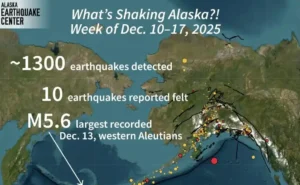According to new state research findings, Alaska’s economy grew slower than nearly every other state between 2015 and 2025. After adjusting for inflation, the GDP growth rate averaged just 0.4% per year, significantly below the national 2.1% annual average.
The study concluded that only North Dakota posted weaker growth, at a mere 0.2% annually, during the same ten-year period. The report, published in Alaska Economic Trends, comes from the state’s Department of Labor and Workforce Development’s research division.
Economist Sam Tappen, who authored the article, emphasized the state’s economic vulnerability and dependence on global oil prices. Tappen noted that Alaska’s real GDP peaked over a decade ago during high oil prices but failed to maintain momentum afterward.
The report said that from 2015 through 2024, Alaska experienced real economic growth in only three years: 2017, 2021, and 2022. Those three years were also the only times Alaska outpaced the national economy in growth over that decade.
Recent GDP figures might seem high without adjusting for inflation, but inflation significantly distorts the actual economic picture. Alaska’s economy took sharp hits during two key years: a 9% drop in 2015 and a 7.1% decline in 2020.
Both drops stemmed from events beyond state control—falling oil prices in 2015 and the COVID-19 pandemic in 2020. States like Wyoming and Louisiana, also reliant on oil, experienced similarly weak growth over this period.
According to Tappen’s breakdown, sectors like construction, hospitality, healthcare, and education grew by about 3% annually. However, even strong-performing industries rely indirectly on oil, such as transportation and warehousing, which grew but remain oil-linked.
Mining, dominated by oil, shrank at an average rate of 2.6%, while seafood and natural resources dropped 3.9% annually. Tappen acknowledged GDP is only one economic measure, alongside indicators like income and employment, for assessing financial health.












